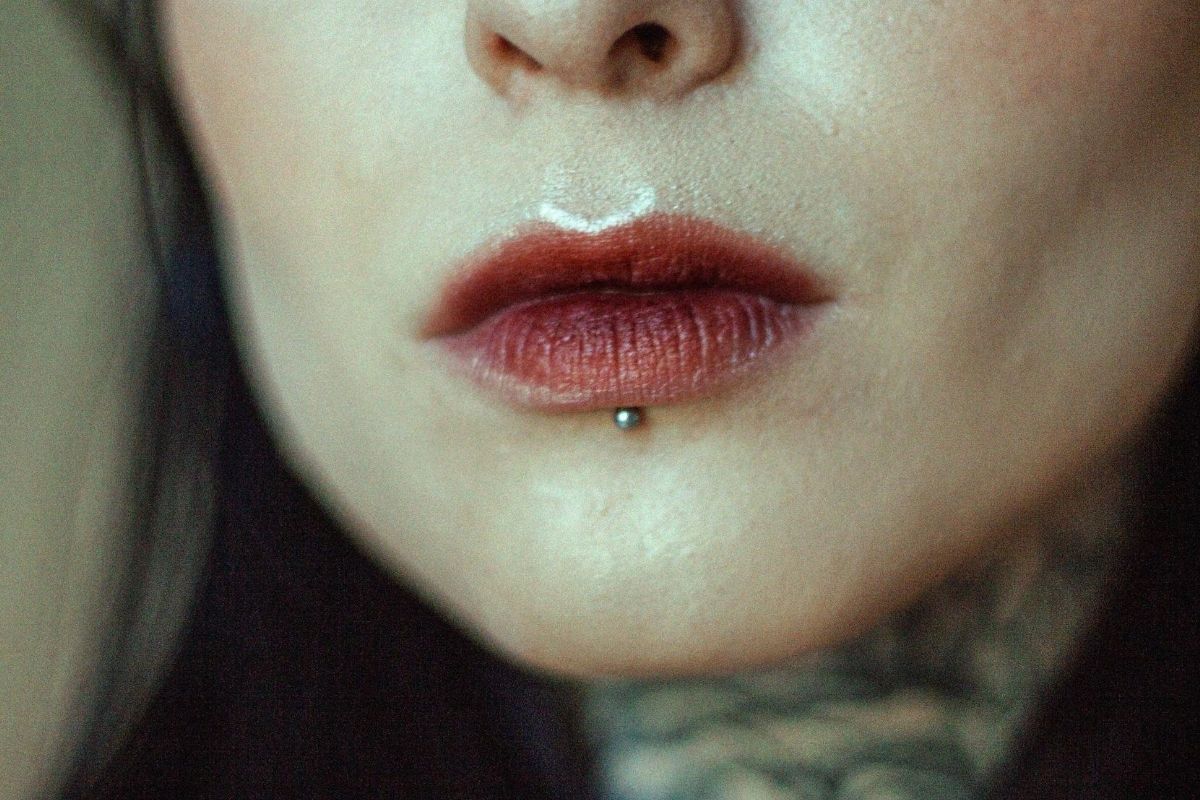Table of Contents
How to Choose Different Types of Lip and Oral Jewelry?
If you are already familiar with the many confusing lip piercing names, we’re sure that the next thing you want to familiarize yourself with is lip rings and how to select the best type to keep your piercings healthy and free of infections.
Unfortunately, the facial regions and the oral area are more sensitive than the rest of the body, so there’s pressure to wear only the right type of jewelry. Experimenting with lower quality jewelry or the wrong type can cause irritation and even infections. Even if the stud is only on the lips, the lips are close to the brain, and what you put on your mouth can eventually be ingested.
Labret studs may look like studs for the ears and elsewhere in the face, but they are specially designed to align with the mouth’s conditions. One point of complication for all oral jewelry is that they normally come into contact with the skin inside the mouth (the mouth lining), the gums and the teeth. For the first time, people getting oral piercings are often warned about the possible complications of just wearing jewelry close to the teeth and gums.
What makes labret studs special is that the back portion of the stud is flat, so it doesn’t damage the gums or teeth as much with regular friction. They’re also threaded, so the risk of losing the stud’s backside is low, though loosening of the stud is still within the realm of possibility due to the dynamic movement of the lips when we speak and eat.
There are four types of labret studs in the market. The standard threaded labret is just a straight oral bar with a locking mechanism on one end. The internally threaded labret has a hollow area at the tip of the post to accommodate the locking mechanism’s threading. Bioflex labrets are recommended for people who tend to play with anything in their mouth. They’re more flexible, and they’re also hypoallergenic. Bioflex labrets are made of plastic.
The labret-style stud is also available for those who want to put one on their nose or ear. However, these are built for oral piercings, mainly.
If you want jewelry that has both sides exposed, you can try the curved barbell. The curved barbell is specially angled, so both sides are seen. Both sides have designed, too.
One of the most comfortable types of oral jewelry is the curved horseshoe lip ring. This lip ring has two spheres on either end. There is also a gap at the center.
Do lip piercings ruin your teeth?
According to dentists, they can ruin your teeth even with the best practices. Jewelry on the tongue or the lips that constantly rub or create fiction with the gums can recede. Since gums hold together the teeth, there’s bound to be tooth damage from constant contact. The problem with gum recession is that more tooth structure is exposed to the generally bacteria-filled environment of the mouth.
This predisposes the teeth to damage and possible infections. Apart from damage to the gums and teeth, you can even lose your teeth after a while if you don’t take care of them properly after getting an oral or tongue piercing.
One of the most effective methods to take care of your teeth and gums is by removing your oral jewelry when you are about to eat, brush, sleep, etc. If you expect a long day of talking with other people, it might be good to remove any oral jewelry. We want to reduce as much friction as we can to avoid damage to the gums and teeth.
Which Materials Are Good?
Since the mouth area can be super sensitive and the complications of a piercing that’s been irritated or infected are quite frightening, you have to invest in the right type of material. The standards for oral piercings are much higher than what is normally employed for ear piercings. We recommend only three kinds of oral jewelry after the initial piercing: surgical grade stainless steel, surgical-grade titanium, and niobium. Does this mean that you can never shift to other metals? The answer is: not really.
After the healing period (which takes months, mind you), you can safely shift to 14-karat gold, stainless steel, and even sterling silver.
However, because we want so badly to avoid any complications, we need to use higher-grade metals to reduce the chances of irritation and possible rejection. Metal rejection is common, and sometimes, even with the best surgical grade metals, it happens.
How to Properly Wear Them and Take Them Off?
The answer is: as gently as possible. Don’t rush when inserting the post into the piercing and screw in the lock with care. Make sure that the tightness is just right, and there is no compression at all. This applies to all kinds of oral piercings and tongue piercings. Take them off the same way you put them in: slowly and deliberately, with care not to irritate the piercing.
How to Take Care of a Piercing?
Piercing aftercare is important for up to two months after the procedure. For oral piercings, care should be made to ensure that food particles don’t get into the piercing as this can cause infection. If you are going to use a mouthwash, make sure that it is alcohol-free, especially during the first few weeks.
Alcohol and cigarettes are not allowed. Oral is also prohibited during the recovery period as it can easily cause bacteria to climb into the open wound in your lips or tongue. While food doesn’t affect stainless steel or surgical grade titanium, we recommend removing studs before eating unless you have not recovered from the piercing. Fresh piercings should never be touched, and the initial jewelry should not be replaced either.



